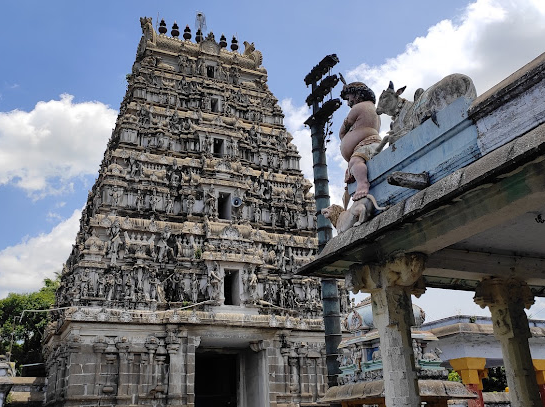According to legend, Lord Brahma worshipped Lord Shiva at this sacred site and planted a miraculous jackfruit tree that bore one fruit each day. Witnessing this wonder, King Rajendra Chola decreed that one member from each family should carry the fruit to Chidambaram to offer it as nivedhana to Lord Shiva. The fruit would then be returned to the king after the rituals.
One day, a young Brahmin boy was assigned this task. Frustrated by the burden placed on the villagers, he questioned why the king did not assign his own men for the duty. The boy asked the villagers to help him, offering to guard their homes in return. The villagers obliged and left for Chidambaram together. Meanwhile, the boy burned the miraculous jackfruit tree, believing it was the root cause of the problem.
When the villagers returned and informed the king, the boy admitted his actions, explaining that the lack of facilities for carrying the fruit compelled him to destroy the tree. Angered, the king ordered the boy to be exiled, blindfolding him for the journey.
While escorting the boy to exile, the king encountered a golden chameleon, which fled into an anthill. When the king tried to uncover it, the anthill began to bleed, and a divine voice rebuked the king for his actions. The voice revealed that the chameleon was none other than Lord Shiva, and the king fainted in realization. The voice further instructed the king to build a temple at the site. Remarkably, the linga in the sanctum sanctorum is said to resemble the size of a chameleon's tail, commemorating this divine event.
Administration History :
The temple was originally built during the Pallava period and later reconstructed during the Rajendra Chola period. Inscriptions from the Rajaraja Chola, Kulothunga Chola, and Vijayanagara periods record various donations and contributions towards the temple. The temple is currently under the administration of the local Hindu Religious and Charitable Endowments (HR&CE) department. Regular maintenance and rituals are conducted by the temple authorities, ensuring the preservation of the temple's sanctity and heritage.
